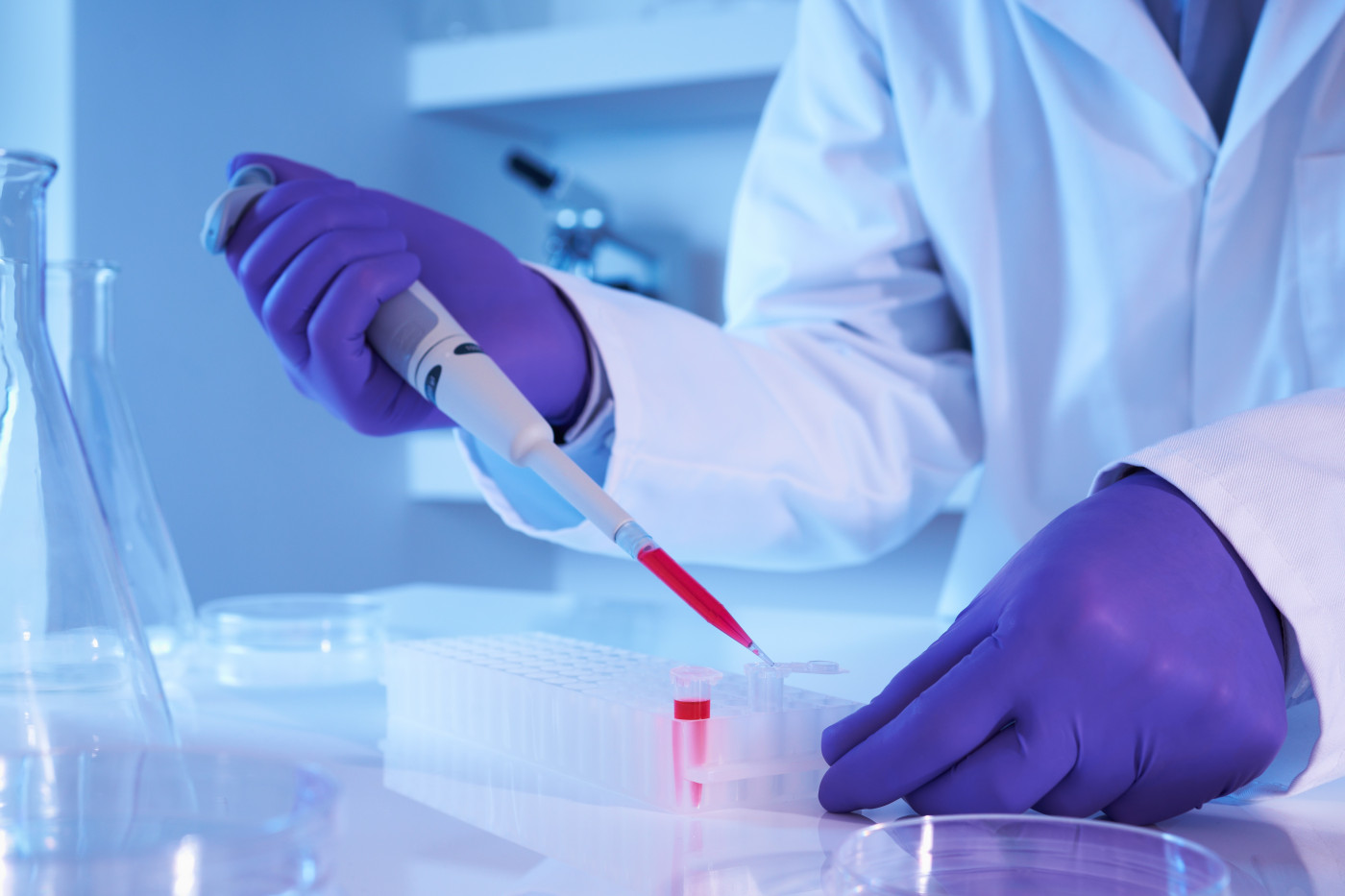What Do Results of Various Tests Mean in AADC Deficiency?

Various tests, particularly blood tests, are normally requested if a doctor suspects your child may have aromatic l-amino acid decarboxylase (AADC) deficiency. An initial test might look at blood levels of 3-O-methyldopa (3-OMD). If those levels are high, a test to determine levels of AADC enzyme activity in the blood may be necessary. If those are low, a genetic test will likely be ordered to confirm a diagnosis.
Here is more information about each of these tests, and what their results mean.
3-0MD testing
A blood test to check levels of 3-OMD can be a first step toward a diagnosis of AADC deficiency. Your doctor can request this test through a program offered at no cost by PTC Therapeutics, in partnership with Centogene.
The 3-OMD test involves collecting a small amount of blood on a piece of filter paper. These dried blood spots are a convenient way of transporting a blood sample, as the blood is considerably stable and doesn’t require refrigeration. This test can also be part of newborn screening for this rare disorder.
The AADC enzyme normally plays a role in producing a chemical messenger for nerve cells (a neurotransmitter) called dopamine from another molecule called levodopa (L-dopa). When the body does not produce the AADC enzyme properly due to a mutation in the DDC gene, L-dopa levels rise. The body breaks L-dopa down into 3-OMD.
Researchers have proposed that 3-OMD levels above certain age-related thresholds may indicate AADC deficiency. For newborns, the threshold is 5 μmol/L. For children between 28 days and 10 years old, it is 3 μmol/L. For those ages 10 to 18, the threshold is anything greater than 2 μmol/L.
If your child’s values are above these thresholds, your doctor will most likely recommend further testing for AADC enzyme activity levels, and possibly a genetic test.
AADC enzyme test
Another test can directly check the AADC enzyme activity levels in your child’s blood. In this test, the clear liquid portion of the blood, called plasma, is separated from the cells that make up the blood. The plasma is then analyzed using an enzyme assay.
During the enzyme assay, clinicians mix your child’s plasma with a solution of L-dopa. Any AADC enzyme in the plasma will react with L-dopa to produce dopamine. A different molecule, called 5-OH-tryptophan (5-HTP), can also be added to the plasma in place of L-dopa, as the AADC enzyme converts 5-HTP to a neurotransmitter called serotonin. However, the 5-HTP to serotonin test is considered less sensitive than the L-dopa to dopamine test.
Clinicians analyze the results of the reaction using high-performance liquid chromatography. This method determines how much dopamine or serotonin was produced. From this information, the level of AADC enzymes present in the blood can be calculated and compared with established, normal reference ranges. If your child has AADC deficiency, their AADC enzyme activity levels will be significantly lower than the reference range, and possibly so low they are not detectable in this blood test.
Genetic testing
As a confirmation of AADC deficiency, your child’s physician may recommend genetic testing. Here, clinicians isolate your child’s DNA — usually from a blood sample — and compare the sequence (the order of nucleic acids or building blocks of DNA) of your child’s DDC gene to a normal DDC gene. Research work to date has linked about 50 different genetic mutations to AADC deficiency. This analysis could both confirm this disease and the type of mutation your child has.
In very rare cases — about four are known — standard genetic testing methods might not detect any mutations in the DDC gene. In these instances, a diagnosis is still possible using the results of blood tests.
Other possible tests
Another blood test that may be used to help diagnose this disorder is the prolactin test. Dopamine usually keeps levels of prolactin low in the body. So high levels may indicate that a child is not producing enough dopamine. The prolactin test is not specific to AADC deficiency, however, as other disorders can also affect dopamine levels.
In suspected cases of AADC deficiency, doctors may also want to analyze the cerebrospinal fluid (CSF), the fluid that surrounds the brain and spinal cord. To obtain samples of the CSF, your child would need to undergo a lumbar puncture or spinal tap. Here, doctors insert a needle between the lumbar bones of the lower back to collect the fluid. The CSF sample is then tested to determine levels of various molecules that play a role in the production of dopamine and serotonin. Results can be indicative of AADC deficiency.
Last updated: Feb. 3, 2021
***
AADC News is strictly a news and information website about the disease. It does not provide medical advice, diagnosis, or treatment. This content is not intended to be a substitute for professional medical advice, diagnosis, or treatment. Always seek the advice of your physician or other qualified healthcare providers with any questions you may have regarding a medical condition. Never disregard professional medical advice or delay in seeking it because of something you have read on this website.






